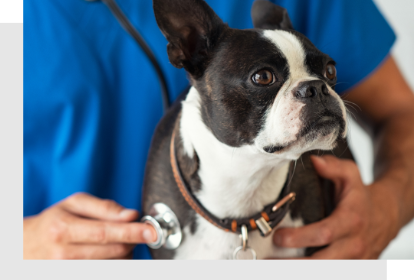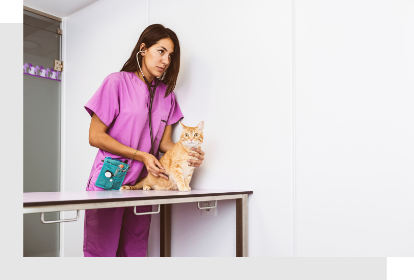Stress: the biggest global pandemic threatening the veterinary industry?
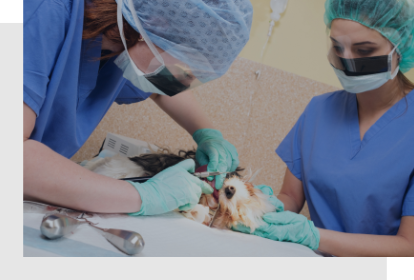
It’s fair to say that the pandemic has caused stress for us all. It’s the caring professions, though, who have probably had the most direct and heavy impact on their stress levels. Veterinary work is often not given the acknowledgement it deserves as a caring profession. In this short blog piece we’ll use data from our recent VetsSurvey to look at stress levels in the veterinary profession across the world.
To begin, let’s look at the reported change in stress levels pre- and post-pandemic. The difference here is quite stark, though it is important to highlight that more than 1 in 3 veterinary professionals were reporting that they were quite or very stressed before the pandemic.
Veterinary stress levels compared pre & during the Covid-19 pandemic
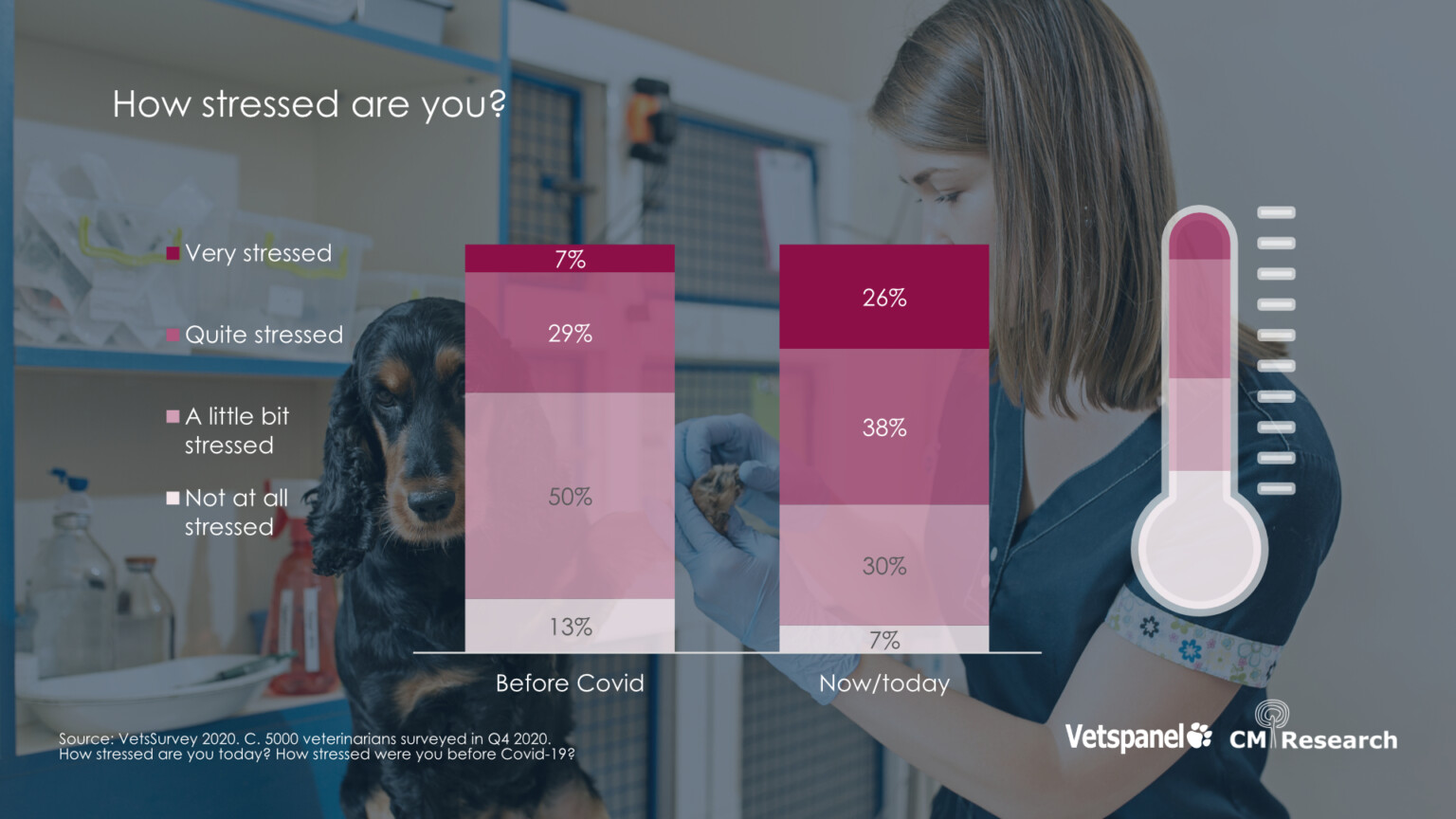
Stress levels vary across the world. Veterinary professionals in Portugal & South America report the highest stress levels, whereas those in the Netherlands and Nordics are the least stressed.
The most stressed country Argentina comes first with almost a half (48%) stating they are ‘very stressed’ followed by Brazil (37%), Portugal (37%). The most dramatic rise in stress levels occur in Argentina with an increase of 41% (from 7% to 48%), followed by the United States of America with an increase of 31% (from 4% 35%).
The higest & lowest stress scoring 5 countries
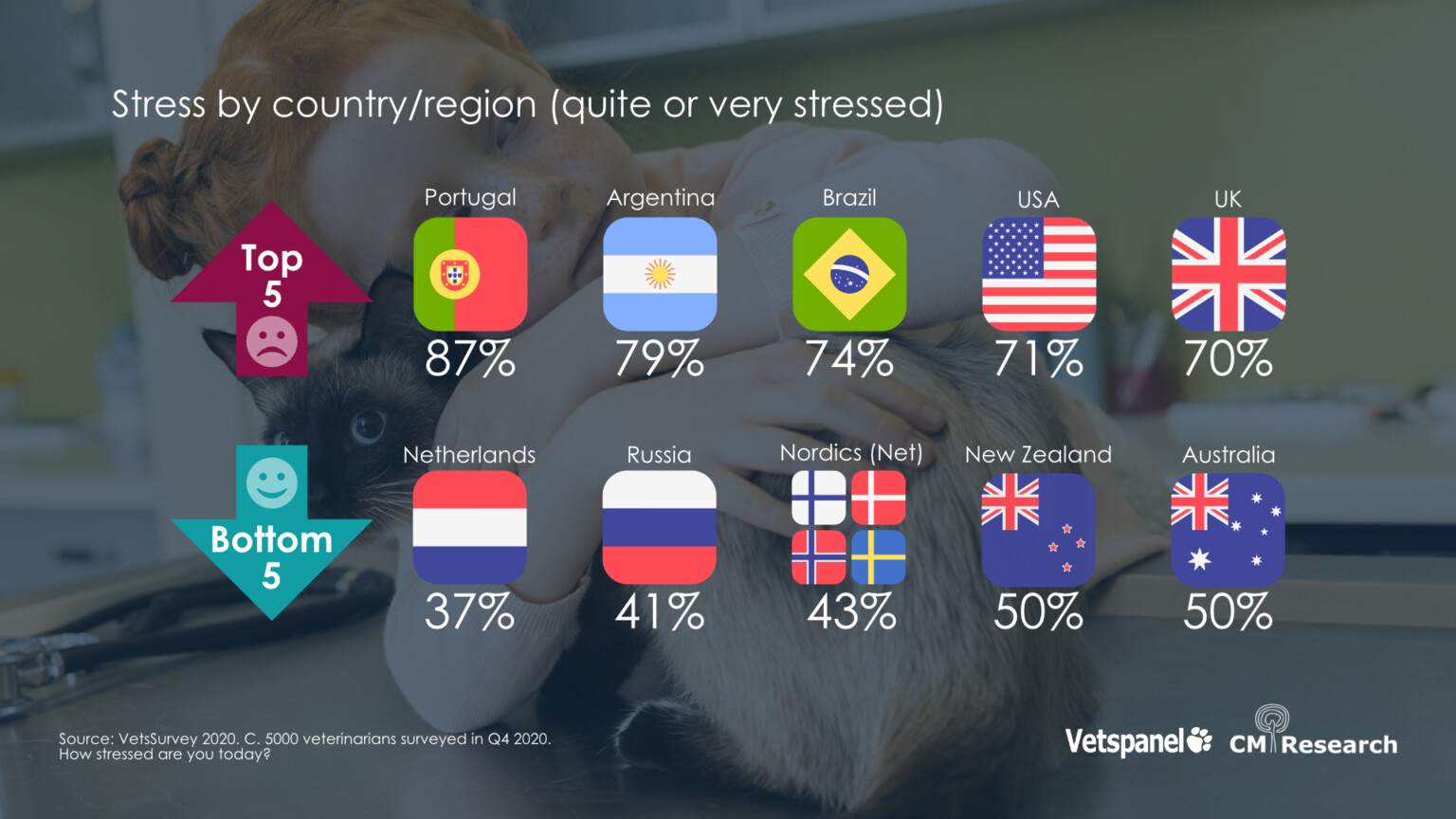
Stress and satisfaction do not have a neat correlation; it is not always the most stressed countries that are the least satisfied. This suggests that in some countries, low stress doesn’t mean satisfaction (for example Russia and Germany). It also suggests that the high stress levels seen in Argentina in Brazil do not lower job satisfaction.
Country Stress & Satisfaction comparison
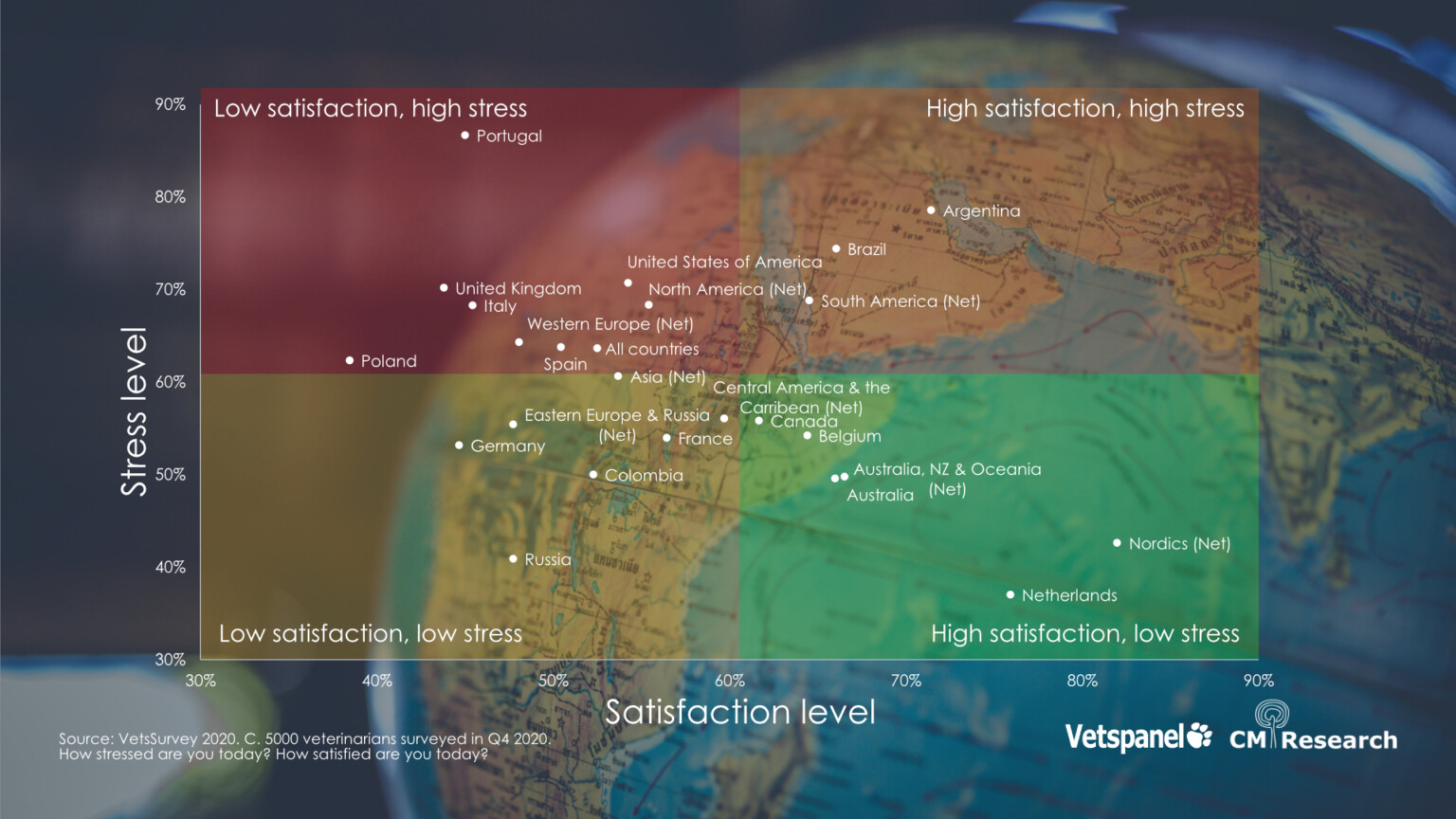
If we look again at the global level we also note that there are some key subgroup differences when it comes to reported stress levels. Veterinary nurses and technicians have significantly higher stress levels compared to other groups. Furthermore, the stress levels of female veterinary professionals are relatively high; the majority of female professionals are either ‘very stressed’ (28%) or ‘quite stressed’ (40%), which is significantly higher than the percentage of ‘very stressed’ or ‘quite stressed’ male professionals (54%). Finally, we also see that those working in corporate practices are reporting higher levels of stress.
Satisfaction levels by group & gender.
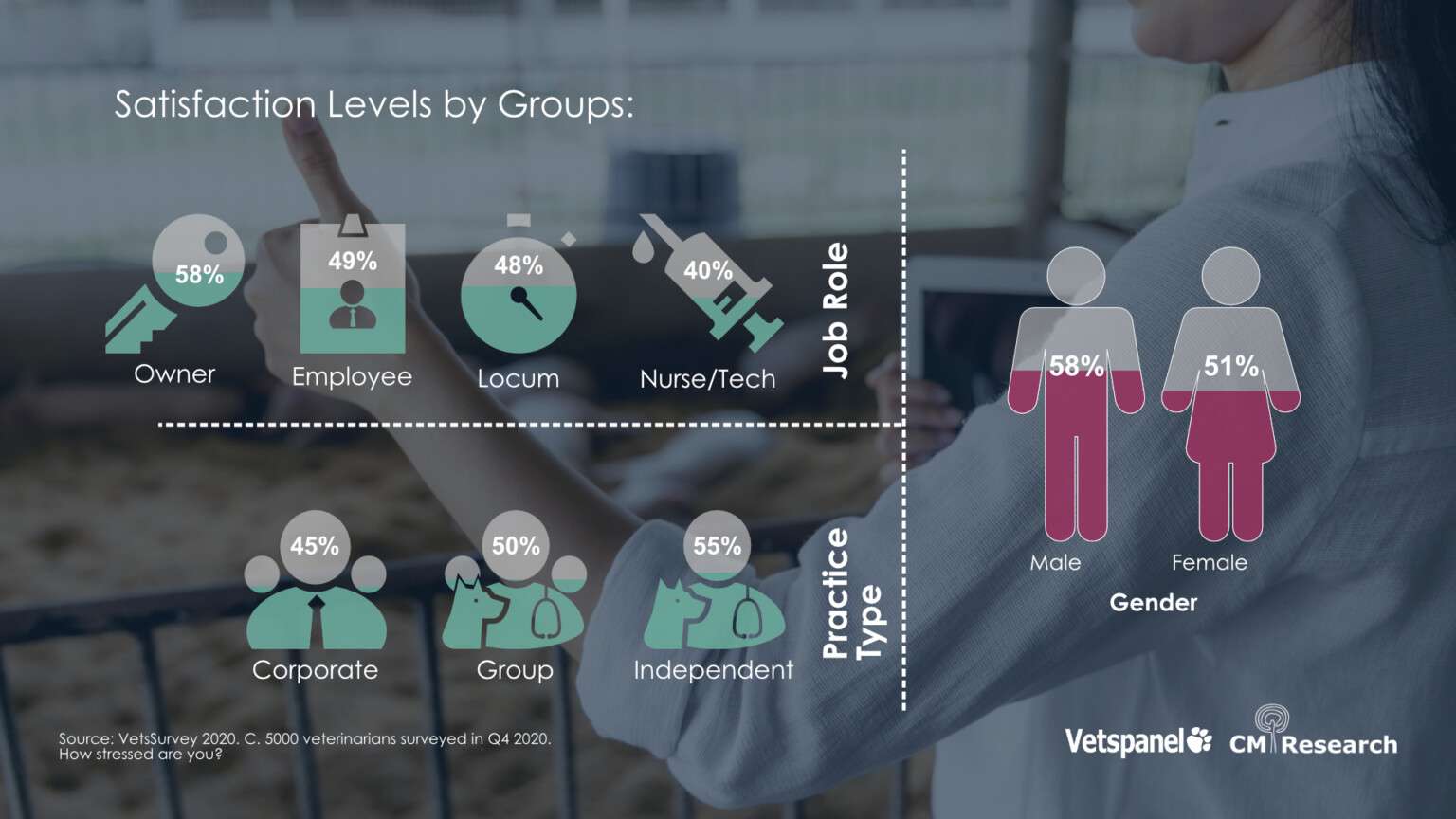
High levels of workplace stress are dangerous to both physical and emotional health. In the case of veterinarians this stress often goes unrecognised. There are many ways in which this collective high stress level can impact both the individuals experiencing it and the industry as a whole. One of these ways is a shortage of veterinary professionals. We asked our members how often they consider leaving the industry to get a better work life balance. It’s very clear to see that the pandemic has had an impact on intention to leave.
How often veterinary professionals think about leaving the profession.
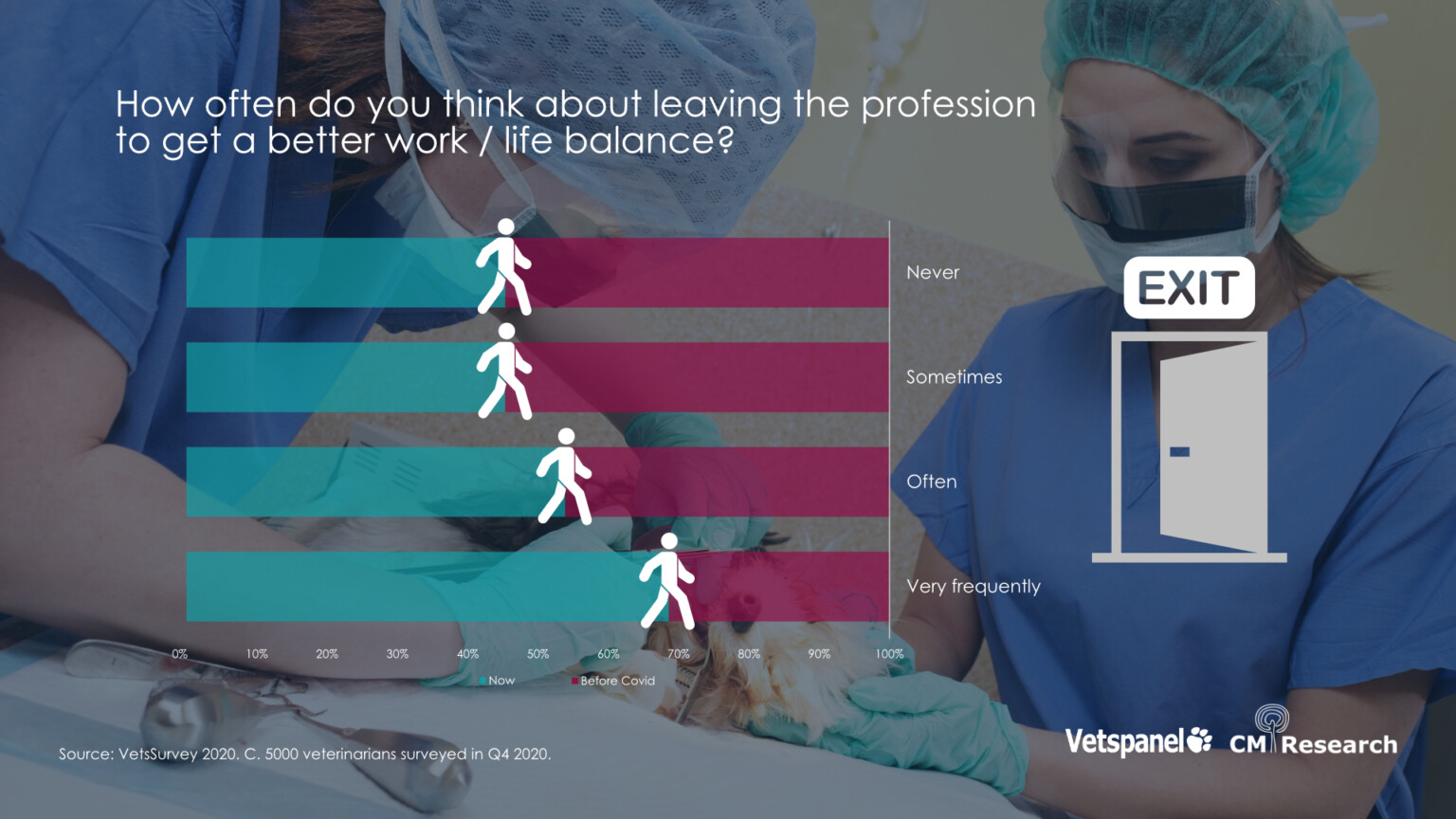
It remains to be seen to what extent this intention will lead to action. Regardless, it is important that we recognise and tackle the level of stress veterinary professionals are under, for the sake of human lives, animal lives and a sustainable and healthy future for the veterinary industry.
Related Blogs
October 20, 2022
The cost-of-living crisis and its impact on veterinary practice. PART I
0 Comments4 Minutes
January 23, 2022
COVID-19 Global Pandemic impact on the veterinary market. VetsSurvey 2020 – Part 1
0 Comments1 Minutes
October 21, 2021
Veterinary nurses overlooked as petition calls for better understanding
0 Comments4 Minutes





